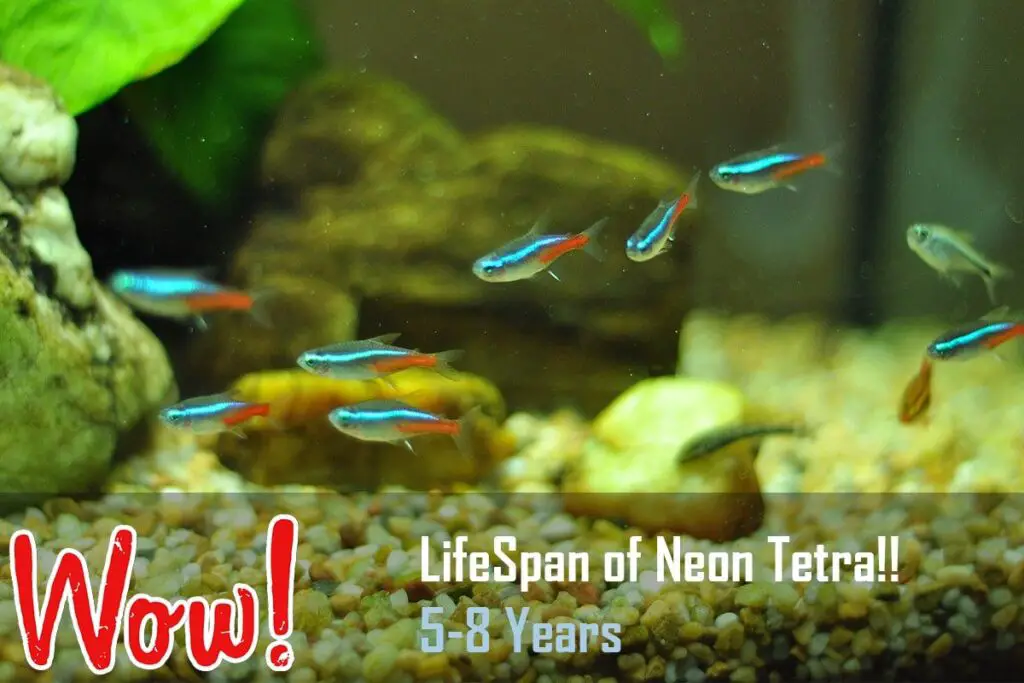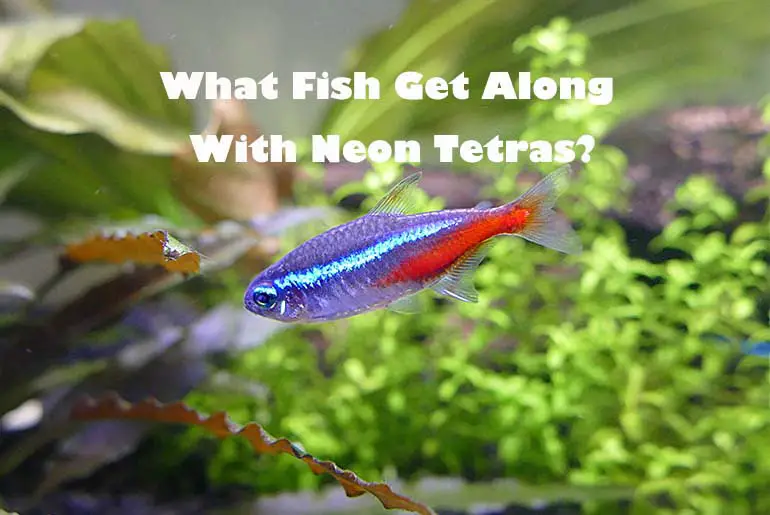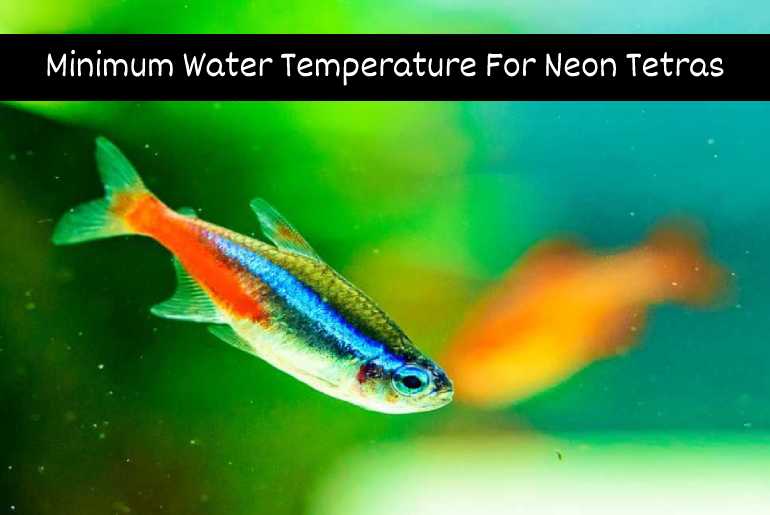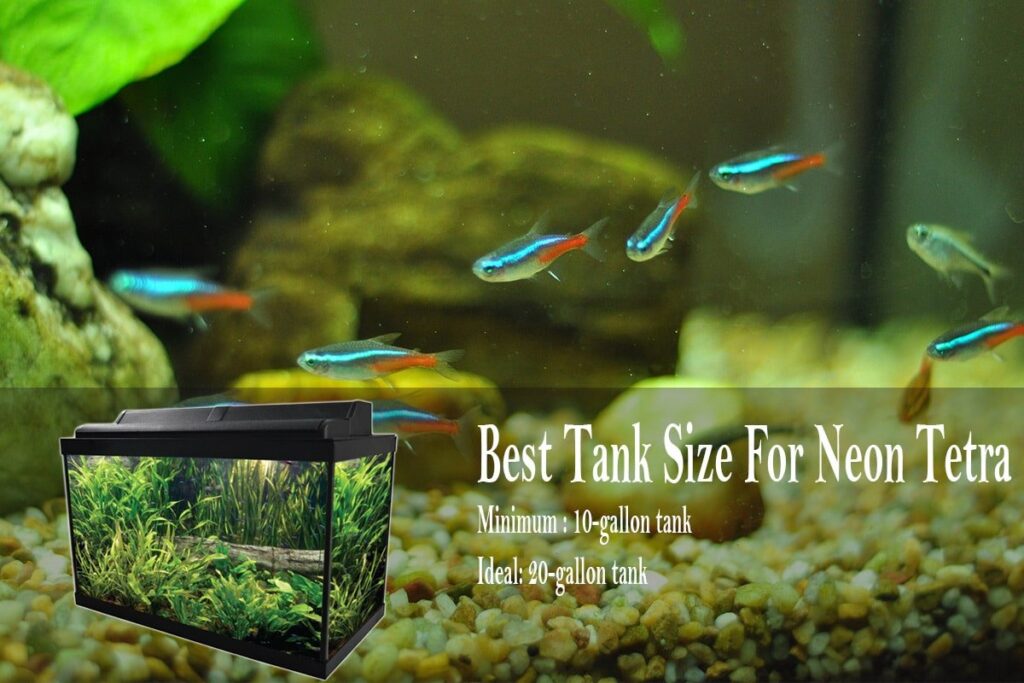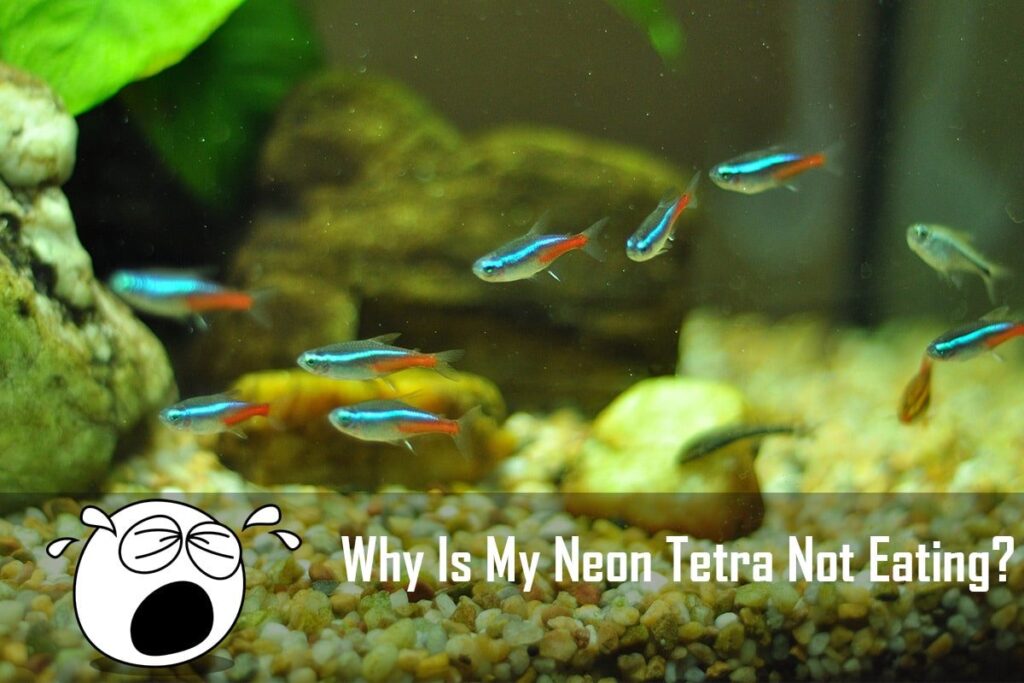Curious about Neon Tetras and their lifespan, often referred to as Paracheirodon innesi? These captivating fish are cherished for their lively hues and gentle disposition. But how long do Neon Tetras live?
Quick Answer:
Neon Tetras typically live in captivity for 2 to 5 years but can thrive for up to 10 years in the wild. Tank size and companionship play a role in their longevity.
Now, let’s delve into the Neon Tetra’s world, understanding their natural habitat, what influences their lifespan, and practical ways to help them live longer.
Neon Tetra Overview
Neon Tetras, scientifically known as Paracheirodon innesi, are beloved among aquarium enthusiasts for their vibrant colors and peaceful demeanor. Originating from Southern Colombia, Western Brazil, and Eastern Peru, these small-sized characids are popular for beginners and seasoned aquarists. They thrive in a community setting, displaying their best behavior when kept in schools of six or more.
Here’s an overview of key characteristics and care requirements for Neon Tetras:
| Scientific name: | Paracheirodon innesi |
| Common Names: | Neon tetra, neon fish |
| Origin: | Southern Colombia, Western Brazil, Eastern Peru |
| Family: | Characidae |
| Adult Size: | 1-1.5 inches |
| Behavior: | Peaceful and Schooling |
| Tank Size: | at least 10-Gallons |
| Diet: | Food Pallets, Food Flakes, Brine Shrimps, Larva (Omnivore) |
| Breeding: | Egg Scatter |
| Ease of breeding: | Easy |
| Substrate Type: | Dark Preferable, Any |
| Lightings: | Low to Medium (Need of complete Darkness for reproduction) |
| pH: | 5.5-7.5 |
| Water Hardness: | 2 dGH to 10 dGH |
| Water Movement: | Moderate |
| Temperature: | 74-82 °F |
| Breeding Temperature: | 82 °F |
| Care: | Easy |
How Long Does A Neon Tetra Live For?
Neon Tetras, renowned for their vibrant beauty, bring life to any aquarium. Naturally, you’d want them to be part of your aquatic world for as long as possible. The expected lifespan of Neon Tetra is 2 to 5 years, but it can gracefully extend to 8 to 10 years, with the average age being around 8 years.
Lifespan In The Wild
In the wild, the neon tetra enjoys a true aquatic paradise. These dazzling fish thrive in their natural habitat, especially in the Amazon River and surrounding waters. Here, they experience a life that spans an impressive 8 to 10 years. The specific conditions of these natural waterways play a significant role in their extended lifespan. The pristine and well-balanced environment allows neon tetras to flourish, showcasing their vibrant hues and maintaining their overall health.
Lifespan In Captivity
However, when neon tetras transition into captivity, typically in our home aquariums, their lifespan will likely decrease. Changes in surroundings and conditions can impact their lifespan by 2 to 5 years on average. This shift in lifespan is largely attributed to the challenges of recreating a completely identical environment to their natural habitat.
The environment and breeding practices influence the lifespan of neon tetras in captivity. When neon tetras transition from natural habitats to captivity, various factors impact their longevity. Sadly, some breeders prioritize profit over the well-being of the fish, perpetuating suboptimal breeding practices.
In many cases, breeders may prioritize quantity and appearance over genetic health. Continuous breeding without considering the quality of genes in the parent fish can lead to weaker offspring, reducing their potential lifespan. This emphasis on breeding for profit can inadvertently contribute to a decrease in the overall lifespan of neon tetras in captivity.
What Influences Lifespan of Neon Tetra
Keeping your neon tetras healthy and thriving requires understanding the key factors influencing how long they’ll be a part of your aquarium. Let’s explore these aspects simply and clearly.
Environmental Factors
Water Quality
Think of water as your tetras’ air. Clean, toxin-free water is vital. Regular water checks and appropriate tank cleaning ensure their home is always fresh and inviting.
Tank Space and Environment
Imagine being in a crowded room; it’s stressful, right? Tetras feel the same! Give them space to move and play, mimicking their natural habitat. A roomy tank with plants and nooks for hiding adds that comfy, at-home feeling.
Lighting
Too much sunlight is like an overly bright room; it’s uncomfortable. Excessive sunlight can lead to unwanted algal growth, posing risks to neon tetras. It’s advisable to keep the tank away from direct sunlight.
Dietary Factors
Proper Nutrition
Would you eat the same thing every day? No! Tetras love variety, too. Treat them to a mix of high-quality fish food to boost their immune system, enhance their colors, and keep their energy levels up. Just like a diverse menu keeps you happy, it does the same for them. void overfeeding, as it can lead to obesity and water quality issues.
Feeding Routine
Establishing a consistent and appropriate feeding routine is equally important. Feeding them twice daily with an amount they can consume in 2-3 minutes helps maintain their health and vitality. Here is a full guide on how to feed your Neon Tetra.
10 Ways To Help Your Neon Tetras Live Longer: Improving The Lifespan Of Neon Tetra
Now that you understand the typical lifespan of Neon Tetras and the factors that can influence it, let’s delve into how you can ensure a long and healthy life for these captivating fish. While Neon Tetras are relatively easy to care for, it’s essential to be attentive and proactive in providing the best care possible. Here are some practical tips to enhance the lifespan of your Neon Tetras:
Choosing Healthy Neon Tetras
When embarking on the journey to nurture Neon Tetras and ensure a long and vibrant life for them, your first step should be to acquire them from a reputable and experienced breeder. A skilled breeder not only understands the intricacies of Neon Tetra care but also focuses on maintaining optimal genetics, which plays a crucial role in the fish’s overall health and longevity.
Here is how you can choose a healthy Neon Tetras:
- Source from a Trusted Breeder: Seek out breeders with a good reputation and experience in rearing Neon Tetras. A reputable breeder ensures that the fish are bred in a healthy and controlled environment.
- Observe Color and Vibrancy: A key indicator of a healthy Neon Tetra is their vibrant colors. Look for fish with bright, well-defined hues, and avoid those with dull or faded colors.
- Consider Size and Shape: Healthy Neon Tetras have well-proportioned bodies and exhibit lively swimming behavior. Avoid fish that appear stunted, emaciated, or exhibit irregularities in their shape.
- Active Swimming Behavior: Watch how the Tetras swim in the tank. Healthy ones will display active and coordinated movements, showcasing their vitality.
Balanced Diet for Longevity
Just as you strive for a balanced diet to maintain your own health, ensuring the same for your Neon Tetras is paramount. These vibrant fish, much like their wild counterparts, thrive on a diverse and nutrient-rich diet. Neon Tetras, omnivores, naturally consume various foods, including algae, insect larvae, and minuscule invertebrates when in their natural habitat.
In your home aquarium, you have the opportunity to offer a well-rounded diet to keep your Tetras happy and healthy. Commercially available fish foods like flakes and pellets are commonly loved by tank-kept Neon Tetras. However, be cautious of ready-made packaged foods containing artificial ingredients and excessive chemicals. Alternatively, you can prepare homemade fish food, ensuring a wholesome and natural diet for your aquatic companions.
Be mindful of overfeeding, as excessive food can lead to severe health issues. It’s advisable to feed the younger Tetras twice a day, offering just enough sustenance to engage them for about three minutes during each feeding session. As the Tetras mature, you can reduce the feeding frequency to once a day, providing appropriate nourishment for their wellbeing.
Maintaining a proper feeding schedule and offering a nutrient-rich diet are key aspects that contribute to the longevity and vitality of your Neon Tetras. A well-fed Tetra is a happy Tetra, adding to the beauty and liveliness of your aquarium.
Maintaining Optimal Tank Conditions
Choosing the Right Tank Size
Selecting an appropriate tank size is a foundational step in creating a thriving environment for your Neon Tetras. Adequate space ensures that the fish have enough room to swim freely, reducing stress and enhancing their overall well-being. A general guideline is to provide at least a 10-gallon tank for a small school of Neon Tetras, accommodating around 6 of them comfortably. However, for an optimum habitat and to allow Neon Tetras to showcase their natural schooling behavior, a 20-gallon tank is recommended, providing more room and a more enriching environment.
You can refer to our article here for an in-depth guide on how many Neon Tetras are suitable for a 10-gallon tank. Additionally, to learn more about the benefits of a 20-gallon tank, check out our detailed guide here.
Also Read: Best Tank Size For Tetra Fish
Monitoring and Adjusting Water Parameters
Ensuring proper water parameters is crucial for the health and longevity of your Neon Tetras. Temperature and water quality are vital aspects to monitor. Maintain the water temperature within the recommended range, usually between 74-82°F (23-28°C). Additionally, closely monitor and adjust:
- pH Levels: Aim for a pH range of 5.5-7.5 to replicate the soft and slightly acidic waters Neon Tetras thrive.
- Water Hardness: Maintain a water hardness of 2 dGH to 10 dGH for optimal health and growth of your fish.
Dive deeper into adjusting water parameters by referring to our dedicated articles on Water Hardness for Neon Tetras and Maintaining pH Levels for Neon Tetras.
Cleaning and Filtering the Tank Regularly
Regular tank maintenance is crucial for providing a clean and habitable space for your Tetras. Perform routine cleaning by vacuuming the substrate to remove debris and uneaten food. Clean the tank walls and decorations to prevent the buildup of algae. Additionally, ensure you have an appropriate filtration system in place to maintain water quality.
Learn more about the importance of filtration and the different options available in our comprehensive Filter Guide for Neon Tetra Tanks.
Ideal Schooling and Social Dynamics
Determining Suitable Quantity
Neon Tetras are renowned for their schooling behavior, an intrinsic part of their nature that significantly impacts their well-being. Observing Neon Tetras in a school is mesmerizing and essential for their mental and emotional health. Keeping Neon Tetras alone can lead to stress and anxiety. To experience the full splendor of their schooling behavior, a group of at least 5 to 6 Neon Tetras is recommended. However, providing plenty of room for them to play, explore, and exhibit their natural movements is equally crucial.
Selecting Compatible Tank Mates
Creating a harmonious community within your aquarium involves selecting tank mates that complement the peaceful nature of Neon Tetras. Opt for small, peaceful fish that can coexist and flourish alongside Neon Tetras. In a previous article, we’ve extensively explored suitable tank mates for Neon Tetras, ensuring a balanced and serene aquatic environment.
Creating a Stimulating Environment
Acclimating Neon Tetras
Acclimating your neon tetras to their new home is a crucial step in ensuring their well-being. Slowly introduce them to the tank by floating the bag they came in, allowing the water temperature to equalize. Gradually add small amounts of tank water to the bag over time so they can acclimate to the new environment without shock.
Mimic Their Natural Habitat
Neon tetras thrive in an environment that resembles their natural habitat. Incorporate live or artificial plants to provide hiding spots and replicate the densely planted areas of rivers and streams they originate from. Utilize driftwood to mimic the shaded regions, allowing the neon tetras to feel secure.
Appropriate Tank Decorations
To ensure your neon tetras have ample space and habitat to explore, opt for a tank size of at least 20 gallons. Enhance their surroundings with decorations such as driftwood, plants, and suitable substrates like ADA Aquasoil Amazonia, which enriches their environment and imitates their preferred darker setting.
Proper Lighting and Substrate
Balance is key when it comes to lighting. Neon tetras prefer subdued lighting for about 12 to 14 hours a day, simulating their natural light conditions. Choose a suitable lighting system like NICREW Classic LED Aquarium Light, which not only complements their habitat but also enhances their vibrant appearance, especially under the glow of black light.
Understanding and Addressing Diseases
Recognizing Common Neon Tetra Ailments
Like any other fish, Neon tetras can be susceptible to various ailments. Neon Tetra Disease is one common and potentially fatal ailment named after this species as it was first identified in them. It’s important to be able to identify symptoms like body discoloration, swimming bladder problems, cysts, and shrinkage of the stomach mass, as these can indicate the presence of the disease.
Implementing Disease Prevention Measures
Prevention is key when it comes to the Neon Tetra Disease, considering it has no known cure. Maintaining optimal water conditions, a well-balanced diet, and a stress-free environment can significantly reduce the risk of your neon tetras contracting this disease. Proper care and regular health monitoring can go a long way in preventing diseases and ensuring their well-being.
Here is the full article on Diseases that Neon Tetra suffers from and their treatments.
Regular Observations
Keeping a close eye on your neon tetras is essential to catch any signs of illness early on. Regular observations of their behavior, appetite, and physical appearance can help you detect any deviations or abnormalities. If you notice any unusual signs or symptoms, it’s crucial to take prompt action, such as quarantining the affected fish to prevent the spread of the disease.
Safe Breeding Practices
Ensuring a Safe Breeding Environment
Breeding Neon Tetras requires careful attention and preparation. It’s a process that demands a level of expertise, making it less suitable for beginners in the fishkeeping world. Providing the appropriate breeding environment is crucial for successfully breeding neon tetras. If you’re considering breeding, refer to a comprehensive breeding guide:”How To Breed Neon Tetras – A Complete Step By Step Guide” to ensure you create a safe and suitable breeding space for your tetras.
Caring for Neon Tetra Fry
After successful breeding, the responsibility of caring for the fry intensifies. Neon tetra fry are delicate and require meticulous care to ensure their survival and growth. The process involves understanding their feeding requirements and creating a nurturing environment. For comprehensive guidance on caring for neon tetra fry, refer to resources like “Tetra Fry Care – A Complete Guide” for essential dos and don’ts in providing the best care for the fry.
Additional Tips for a Healthy, Long-Lived Tetra
Regular Water Changes
Regular water changes are paramount for maintaining a healthy environment for your Neon Tetras. Aim for weekly water changes of about 25-30% of the tank volume. This helps remove accumulated waste and excess nutrients and ensures a stable water quality. Consistent water changes mimic their natural habitat conditions and significantly contribute to the overall well-being and longevity of your Tetras.
-Including More than One Tetra
Neon Tetras are social fish that thrive in a community. Keeping them in a group of at least five to six individuals or more is advisable. You should never keep Neon Tetras in a small tank alone. In the company of their own kind, they display their characteristic schooling behavior, making them feel secure and reducing stress. An aquarium with a proper school of Neon Tetras is visually appealing and ensures their mental and emotional health.
Education and Awareness
Equipping yourself with the right knowledge about Neon Tetra care is essential. Understanding their specific needs, behaviors, and habitat requirements is crucial for responsible fishkeeping. By providing accurate and detailed information on Neon Tetra care, we aim to empower fish enthusiasts to create optimal environments for their aquatic companions.
Additionally, we emphasize responsible ownership, advocating for ethical practices, and a deeper understanding of the commitment involved in caring for these beautiful creatures. Responsible ownership ensures the well-being and longevity of Neon Tetras, promoting a fulfilling and harmonious coexistence within the aquarium.
Which One Lives More: Male Or Female Neon Tetra?
I have kept Neon Tetra for years and didn’t find any factors to claim that female Neon Tetras live longer than male Neon Tetras or vice versa.
From my experience, I can tell that both the male and the female Neon Tetra live longer if kept separately.
Females will have a shorter lifespan only if they breed all the time. Likewise, a male neon tetra will have a short lifespan only if they mate like crazy all the time.
Summary: Increase Lifespan of Neon Tetra
Discover the key factors that pave the way for a vibrant and longer life for your Neon Tetras. From smart breeding choices to maintaining a natural environment, these aspects play a crucial role in nurturing happy and healthy fish.
- Choose vibrant, healthy Neon Tetras from reputable breeders.
- Provide a diverse diet with proper portion control.
- Ensure suitable tank size and water quality.
- Maintain a proper school size for a thriving community.
- Design the tank to mimic their natural habitat.
- Recognize and address common health issues promptly.
- Foster a secure breeding environment and care for fry.
- Offer quality food in appropriate amounts.
- Regular water changes and group living enhance their well-being.
- Disseminate information for responsible Neon Tetra care.
FAQs
Are Neon Tetras Hardy?
Yes, Neon Tetras are generally considered hardy, making them suitable for both beginners and experienced aquarium enthusiasts.
Do Neon Tetras Die Easily?
Neon Tetras are considered hardy fish, but they can be sensitive to sudden changes in water conditions. They can live a long time with proper care and a stable environment.
How Easy Are Neon Tetras To Keep Alive?
Neon Tetras are relatively easy to keep alive with proper tank conditions, a well-maintained environment, and a balanced diet. Attention to their specific needs contributes to their overall well-being.
How Many Times A Day Do You Feed Neon Tetra Fish?
Feeding Neon Tetras twice a day is recommended, giving them only the amount of food they can consume in about 2-3 minutes. Adjust the feeding frequency as they age.
Can Neon Tetra Die Easily?
While Neon Tetras are hardy, sudden changes in water parameters, poor tank conditions, stress, or diseases can lead to health issues and, if not addressed promptly, can result in fatalities.
Is it important to provide insights into potential risks or situations where Neon Tetras might face difficulties?
Yes, educating about potential risks and challenges is crucial to help aquarium enthusiasts anticipate and prevent issues, ensuring a better environment for their Neon Tetras.
Why Are Your Neon Tetra Dying?
Neon Tetras may face challenges due to unsuitable tank conditions, stress, inadequate diet, or diseases. Understanding the cause can help rectify issues and improve their longevity.
Are there specific causes you want to focus on to help readers prevent Neon Tetra deaths?
The key causes to focus on include water parameter fluctuations, poor diet, inadequate tank size, incompatible tankmates, and disease prevention. Providing guidance on these aspects can help readers enhance their Neon Tetras’ well-being and prevent untimely deaths.
Conclusion:
In a nutshell, delving into the world of Neon Tetras offers vibrant aquatic beauty and the joy of nurturing these lively creatures. Understanding their lifespan and the ways to enhance it lies in the heart of how we care for them. Neon Tetras, being both peaceful and affordable, grace your aquarium without burdening your budget.
Remember, the key lies in maintaining a stable living environment and being mindful of water changes. A well-rounded diet, appropriate tank conditions, and the right companions ensure a stress-free life for these charming fish. A happy and stress-free life ultimately paves the way for a healthy and flourishing journey for your Neon Tetras. Happy fishkeeping!
